Pothos vs Philodendrons are arguably among the most popular houseplants around the world. However, due to their resemblance in many ways, they are often mistaken for one another and are marketed similarly.
While they look alike and generally have the same niche and care needs, pothos and philodendrons have distinct characteristics that set them apart and make them uniquely remarkable. Let’s discuss about pothos vs philodendron.
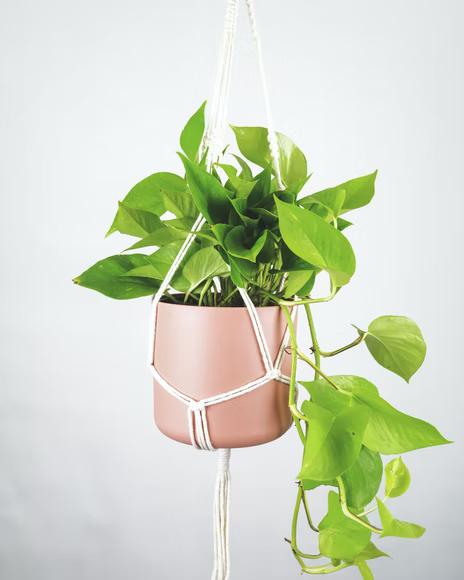
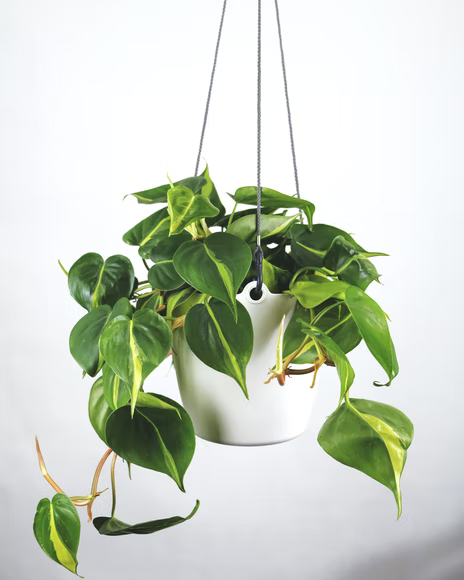
Pothos plant (Left). Philodendron plant (Right)
Continue reading to know what to look for first when you find yourself at a crossroad to identify between a pothos and a philodendron plant. Good for you! You don’t have to worry anymore.
Here’s a complete breakdown and listing to know how to spot differences between these two excellent, similar-looking houseplants!
Pothos vs Philodendron Taxonomy
Both Pothos and Philodendrons share a similar lineage. Pothos and Philodendron plants are members of the Aroid plant family, Araceae. They are close relatives to Alocasias and Monsteras.
They are both climbing perennials – often growing on trees and other plants, houses, walls, and telephone poles – and love the tropical environment as native tropical plants.
However, Pothos and Philodendron plant species come from different genera. Pothos come from the Epipremnum genus, and Philodendrons come from the Philodendron genus.
Leaf Shape And Texture

Pothos leaves
Although very similar looking, one can easily differentiate pothos from philodendrons by looking closely at their overall shapes and leaf textures.
A Pothos plant usually has leaves that are thicker compared to philodendrons, like your green jade pothos. As a result, they are more succulent and have a waxy leaf texture. In most pothos species and their varieties, a slightly raised or bumpy surface can also be observed on the leaves.
Moreover, the midrib of the pothos plant is more distinct and easily observed, and the shape is more of a gardening spade (See photo above).
On the other hand, the Philodendron plant has thinner leaves than pothos. A smoother, gliding texture of the leaves is also an identifying factor for philodendrons. If you have pothos and philodendrons, try to glide your fingers to each leaf blade and see the differences in their textures.
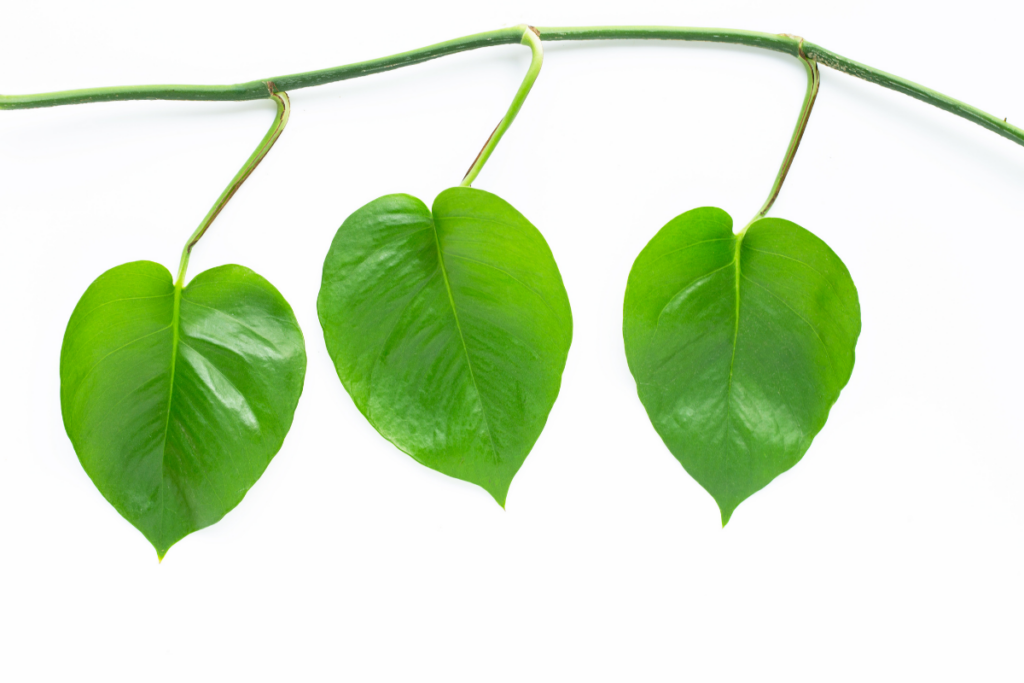
Philodendron leaves
Furthermore, the shape of philodendron leaves (see photo above) is more heart-shaped due to the distinctive sinus, the space between the two lobes of a leaf where the petiole is attached, and a more pointed leaf apex. This is easily observed in Philodendron hederaceum or heart leaf philodendron
Philodendron leaves are also symmetrical, meaning the blade on each side of the midrib is equal in spread, while pothos leaves can be asymmetrical.
RELATED: What Type of Pothos Do I Have? Let Us Solve the Puzzle!
Growth Habit And New Foliage
If looking at the leaf shape and the texture still does not help you discern between a pothos plant and a philodendron plant, observing the growth habit and the emergence of a new foliage might help you!
A newly emerging leaf of a pothos plant has a simple mechanism of unfurling and extending. This can be observed in golden pothos, marble queen pothos, or any pothos varieties. From the apex of the plant, a new leaf just simply does its thing to extend and unfurl without the help of another plant organ.
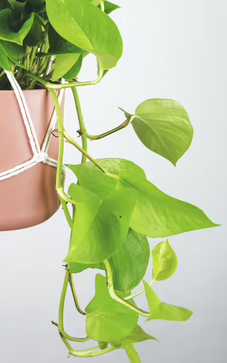
Pothos New Foliage
However, on philodendrons, the newly emerging leaf will start to grow on an apex of a viny stem in a waxy, thin, slightly opaque sheath called a cataphyll. A cataphyll is a small, specialized leaf mainly to act as protection of a leaf bud, where a new leaf will develop.
This cataphyll will become papery and turn to brown and drop eventually when the leaf fully develops.
Cataphylls can only be seen in philodendrons and not in pothos.
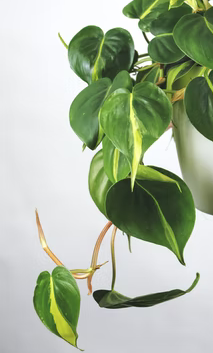
Philodendron New Foliage
On the other hand, the color of the newly emerging foliage can also be used to differentiate between the two. New philodendron leaves tend to be pinkish or brownish at first and eventually turn to their actual color with maturity.
However, a new pothos leaf is just a lighter shade of color than the previous leaf or the rest of the mature leaves of the plant.
RELATED: Philodendron Rojo Congo: The Best Care, Propagation, and Watering Guide You Need
Aerial Roots And Stems

Photos stem cuttings with visible roots
I know plant identification can be so confusing and hard, so here’s another guide to identifying between a pothos and a philodendron. If the different leaf characteristics still don’t work, then let’s try to look at the features of the stems.
The stems are relatively thicker for a pothos plant than your philodendrons. Plus, they mostly have the same coloration as the stems. So if your pothos foliage is a bright green, the chances are that the stems are colored the same.
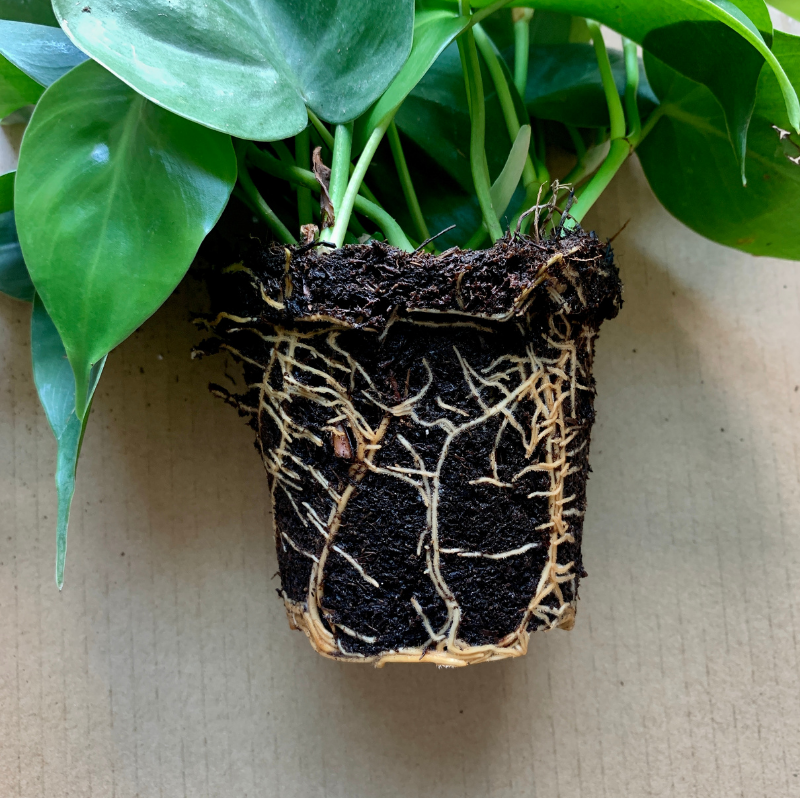
Philodendron roots
On the other hand, Philodendron stems are mostly greenish-brown, with the apical stems having orange to brown hues.
Aerial roots between a pothos and a philodendron also differ. The aerial pothos roots are usually thick and less wiry. Often only one root branches out from a node. However, Heartleaf Philodendron aerial roots are thinner and more wiry and spindly.
They have more clustered aerial roots. A group of two to six roots sometimes grow out from one node.
Petioles
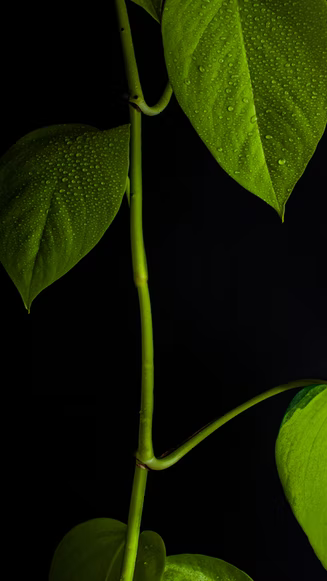
Pothos Petiole – Photo Credit
Lastly, the petioles can be used to distinguish plants from one another. Therefore, they are an important taxonomic character that will help you identify your plant. With regards to pothos and philodendrons, the differences in their growth habits also render differences in the characteristics of their specific petioles.
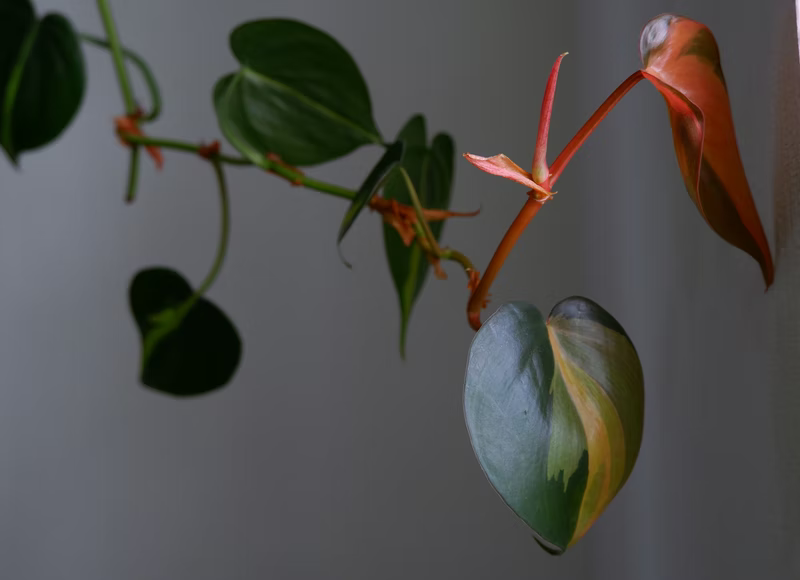
Philodendron petiole
The pothos petioles are generally thicker and usually lean towards the connecting stem. On the other hand, the philodendron petioles are thinner. They are also fully rounded.
RELATED: Philodendron gigas: The Care, Propagation, and Watering Guide You Need
Environmental Conditions And Propagation
Although pothos and philodendrons generally share similar care needs in light, temperature, soil, and humidity and are considered low-maintenance household plants, there are still minor differences that can somehow affect their growth and development.
For one, pothos and philodendrons are able to tolerate a low amount of light; however, philodendrons are more tolerable to low light than pothos plants. Furthermore, pothos can tolerate a higher temperature range than philodendron varieties and are more drought tolerant.
These differences in intolerance to light and temperature could be due to the waxy foliage of the pothos.
Furthermore, philodendrons produce offsets or baby plants which can be utilized for propagation, while pothos do not. Pothos only rely on stem cutting propagation, which can also be used for philodendrons.
Table 1. Pothos Vs. Philodendron
| Characters | Pothos | Philodendrons |
| Taxonomy | Family: AraceaeGenus: Epipremnum | Family: AraceaeGenus: Philodendron |
| Leaf shape | Like a gardening spade, indented midrib, leaf base generally straight, can be asymmetrical | Heart-shaped, prominent sinus, leaf base curved inwards, tailed apex, symmetrical |
| Leaf texture | Thicker, waxy leaves, slightly bumped | Thinner, smoother |
| New Foliage | Simply extends and unfurls, lighter shade of the mature leaf color | Extends from a cataphyll, pink or brownish in color |
| Petioles | Thicker and indented towards stem | Thinner and fully rounded |
| Stems | Thicker and same color as leaves | Thinner and greenish brown, apical stems orange to brown |
| Aerial Roots | Thick, one root in one node | Thin and spindly, 2-6 roots in a node |
| Environmental Conditions | More tolerable to high temperatures and drought | More tolerable to low light |
| Propagation | Via stem cutting only | Via offsets and stem cutting |
Conclusion
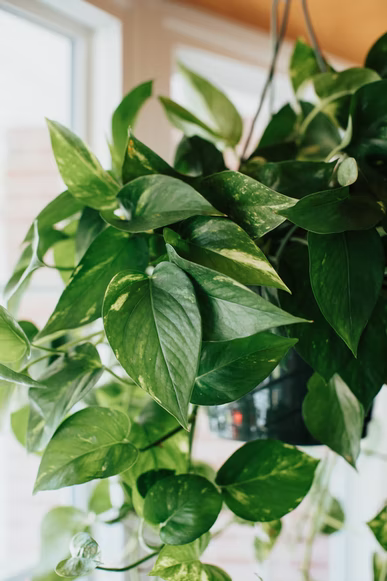
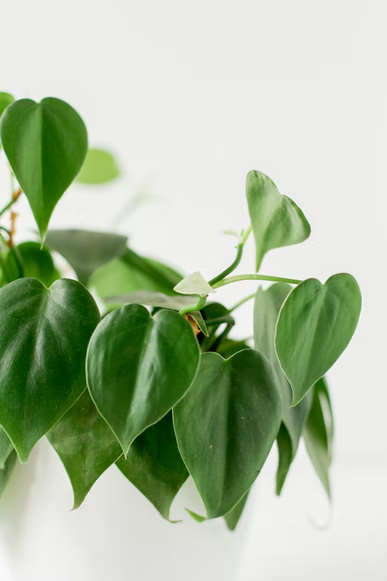
Left. Pothos plant – Photo Credit (Taylor Heery) Right. Philodendron Plant Photo Credit (Sarah Bronske)
In general, when trying to identify between plants, it is definitely suggested to take a broader look at the plants as a whole and then zoom in to specific plant organs to see the differences, which could be as obvious as color differences or as intricate as the vein branching.
Don’t worry if you fail to identify plants on your first or second try. Plant identification takes a LOT of practice and hard work to get familiar with the plant characters and easily spot their differences.
Pothos and Philodendrons, coming from the same family, are easily misidentified. With the close similarities in their characteristics and genetic lineage, it is understandable that these two are hard to discern from one another. However, the general guideline here will surely help you identify between any species and varieties of pothos and philodendrons.
Get your plants and start identifying!
Frequently Asked Questions
Which is better – Pothos or Philodendron?
That cannot be answered by a simple yes or no. Pothos and Philodendrons have individual charms and uniqueness that make both of them special and…better. It really depends on your personal taste and preference. Why choose when you can have them both? That way you won’t have to worry about which one’s better than the other.
Are Philodendrons and Pothos the same thing?
No. Philodendrons and Pothos, although they come from the same family, Araceae, are not the same. Philodendrons are species from the genus Philodendron. On the other hand, Pothos plants are species from the genus Epipremnum. They have distinctly different characteristics that set them apart from each other.
Can Philodendron and Pothos grow together?
Yes, of course. Pothos and Philodendron plants are tropical plants, which basically have the same requirements for light, water, temperature, humidity, etc. You don’t have to worry about adjustments of care requirements because they are essentially the same for both of these plants. It’s a win-win situation!
How can you tell the difference between Philodendron and Pothos?
Although Philodendrons and Pothos are remarkably similar looking, you can differentiate between the two by looking closely at some of their characteristics such as leaf shape, texture, aerial roots, growth habit, new foliage, and stem.
To start, a Philodendron is thinner, smoother, and heart-shaped while a Pothos is shaped more of a gardening spade, thicker, and more waxy.
Editor’s Recommendations
Monstera albo: The Best Care, Propagation, and Watering Guide
Rhaphidophora tetrasperma: The Complete Care, Watering, and Propagation Guide
12 Types of Popular Tradescantia Wandering Jew Plants with Pictures







